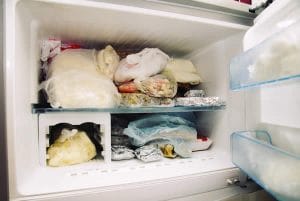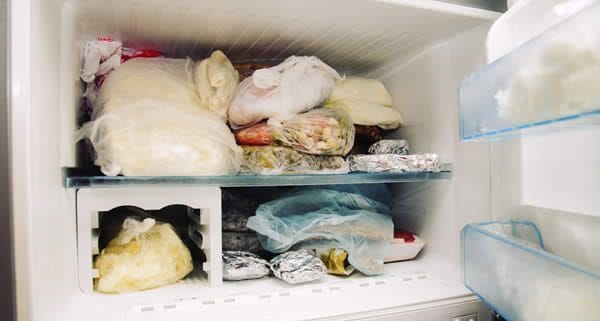How to Freeze Foods Safely
Freezing is a great way to preserve food for a long period of time, and that’s all thanks to some simple science. As the temperature of the food drops below freezing point, the water in its cells turns into ice crystals. The optimum temperature for freezing most foods is between -15°C and -18°C, because this is the temperature at which food-poisoning bacteria stops growing. In other words, freezing doesn’t kill bacteria but stops it from growing rapidly and prevents food poisoning.
 Here’s how to store different kinds of foods safely and efficiently, so you also make the most of your freezer space.
Here’s how to store different kinds of foods safely and efficiently, so you also make the most of your freezer space.
Liquid-based dishes
Store soups and stocks, in airtight containers. Leave a 3cm gap at the top so the liquid can expand as it freezes. Alternatively, once liquid is cooled it can be placed into a sealable plastic bag and laid flat in freezer. This helps save space in your freezer.
Berries
Arrange, in a single layer, on a baking tray and freeze. This allows fruit to retain its shape. Once frozen, transfer to an airtight container and freeze.
Fritters and Pancakes/Crepes
Place, in single layers, between sheets of freezer paper in an airtight container. This makes them easy to separate.
Muffins, Cakes & Slices
Wrap muffins and individual slices of cake in a double layer of plastic wrap, then in foil. Store together in a sealable plastic bag.
Purees
Freeze purees, and even concentrated stocks, in ice cube trays, so you don’t have to thaw the whole lot when only smaller quantities are needed.
Once frozen they can be emptied from the tray and stored in sealable plastic bags.
Mince
Place in a sealable plastic bag and press to flatten. This allows the mince to thaw more evenly than when it’s frozen in a ball shape.
Pasta Bakes
Cook pasta bakes in freezerproof, ovenproof dishes. Cool. Cover with a double layer of plastic wrap, then in foil and freeze.
Nuts
Place in airtight containers or sealable plastic bags and store in the freezer. Nuts contain a lot of oil and can become rancid if stored in the pantry.
Ice-cream
Cover the surface of the ice-cream with plastic wrap, replace the lid and freeze. This prevents freezer burn.
Packaged meat
Remove meat, such as steaks, sausages, chops and fillets, from the supermarket packaging. The supermarket wrapping is designed to allow oxygen in to keep the colour of the meat bright and, while this is fine for refrigerated storage, it leads to freezer burn in the freezer. Instead, wrap portions separately in a double layer of plastic wrap, or layer them between sheets of freezer paper, and store in an airtight container. This makes single portions easy to separate.
What not to freeze
- Vegetables with a high water content (such as cucumber, celery and lettuce) should not be frozen because the water expands during freezing and damages the structure of the cells. This makes them mushy when thawed.
- Jam turns runny and watery when frozen and thawed. This is because freezing causes the sugar to break down.
- Dairy products (such as milk, yoghurt and cream) should not be frozen because they curdle when thawed.
- Egg-based sauces separate and whole egg shells crack when frozen. Raw egg whites, however, can be frozen in sealable airtight containers and thawed for use in recipes.
- Foods with stuffings, such as whole chickens, should not be frozen as raw meat juices can be absorbed by the stuffing and cause bacteria to grow.

